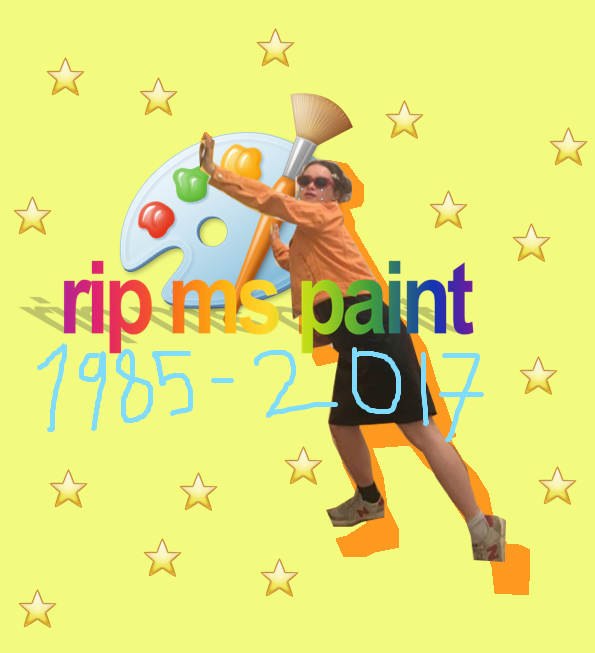On the 24th July, with the announcement of the next Window’s 10 update, it was revealed that MS Paint, a staple of the operating system since its birth in 1985, would be among the features that had been ‘removed or deprecated in Windows 10 Fall Creators Lists.’ Essentially, this means that the feature would not be available on updated models. The death of the program enabled the rise of Paint’s successor, Paint 3D,– a program described to be similar but ‘not the same.’
Naturally, this news was met with appropriate levels of outrage. Outpourings of support for the program could be seen all across online spheres, with the publication of art created on Paint spiking on social media. Buzzwords like ‘nostalgia’ and ‘accessibility’ were thrown around across Twitter and Facebook. While Microsoft were quick to reverse their mistake, assuring people that the program would still be available in their store for download, the whole series of events leads to some very interesting questions. Does MS Paint have artistic value beyond nostalgia? Is it important for the art community beyond the cheap and easy route it provides to editing your friends heads onto various pictures of beasts and porn stars? Does the kitschy contribution it makes to my own personal Instagram feed merits its continued existence?
Some would certainly think so. The aforementioned ‘accessibility’ of MS Paint, in comparison to other digital drawing programs such as Photoshop, is glaring. Photoshop costs upwards of £50 a month for an all inclusive package and, while free trials are available – they are finite. Paint, on the other hand, is forever. When the Photoshop trials runs out, Microsoft Paint is there waiting, infinitely. With this in mind, people have been using Paint as their program of preference for years.
You could argue that the resurrection of Paint occurred far before the last few weeks. Miranda Lorikeet, for example, has been using Paint to produce eerie vistas and pastel dream-scapes, bedecked with abstract figures of women and horses. In a similar vein, the late Hal Lasko used Paint to create pointillist styled oeuvres forest scenes and landscapes. For these artists, the garish value of Paint is eclipsed by its functionality. One prevalent observation about these artists is the foreign feel of their artworks. Lorikeet’s work is full of profiles and derriere shots of women in pink and orange landscapes but seldom ever a dead-on glare or even an non-obscured face, and subsequently is constantly met with the mark of ‘outsider.’ Similar points have been made of Lasko’s work.
Admittedly, Paint draws an unlikely clientele, far removed from the rest of the art community. Lorikeet is, by day, a run of the mill HR assistant and Lasko, at the time of the production of his works, was a partially blind 97 year old. It is true that these artists are a far cry from the typical Central Saint Martins or Slade outputs. By virtue of their online medium, it is likely that they will always be somewhat underground. But does the leveling of the ‘outsider’ comment enlighten us to further divides within the art community?
Digital art often finds itself the subject of heavy criticism, rarely receiving the same accolades as that produced with traditional mediums. The rebirth of Paint has reminded all of us why the program is so important, and has helped to legitimise the work of digital art. We should not only appreciate the importance of MS paint’s second chance, but we should also celebrate its existence.



